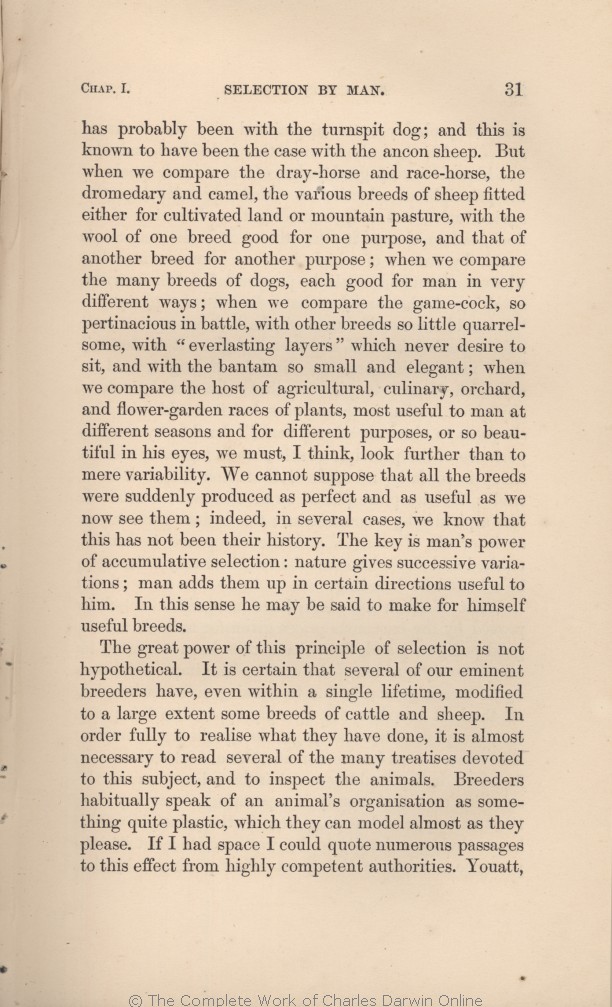has probably been with the turnspit dog; and this is known to have been the case with the ancon sheep. But when we compare the dray-horse and race-horse, the dromedary and camel, the various breeds of sheep fitted either for cultivated land or mountain pasture, with the wool of one breed good for one purpose, and that of another breed for another purpose; when we compare the many breeds of dogs, each good for man in
very | very 1859 1860 1861 1866 1869 | very 1872 |
| quarrel-some, 1860 1861 | | quarrelsome, 1859 1866 1869 1872 |
| several 1859 1860 1861 | | many 1866 1869 1872 |
| man's 1859 1860 1861 1866 1872 | | mans 1869 |
| make 1859 1860 1861 | | have made 1866 1869 1872 |
|
|
The great power of this principle of selection is not hypothetical. It is certain that several of our eminent breeders have, even within a single lifetime, modified to a large extent
some | some 1859 1860 1861 1866 | | the 1869 | | their 1872 |
| animal's 1859 1860 1861 1866 1872 | | animals 1869 |
| quite 1859 1860 1861 1866 1869 | quite 1872 |
|









